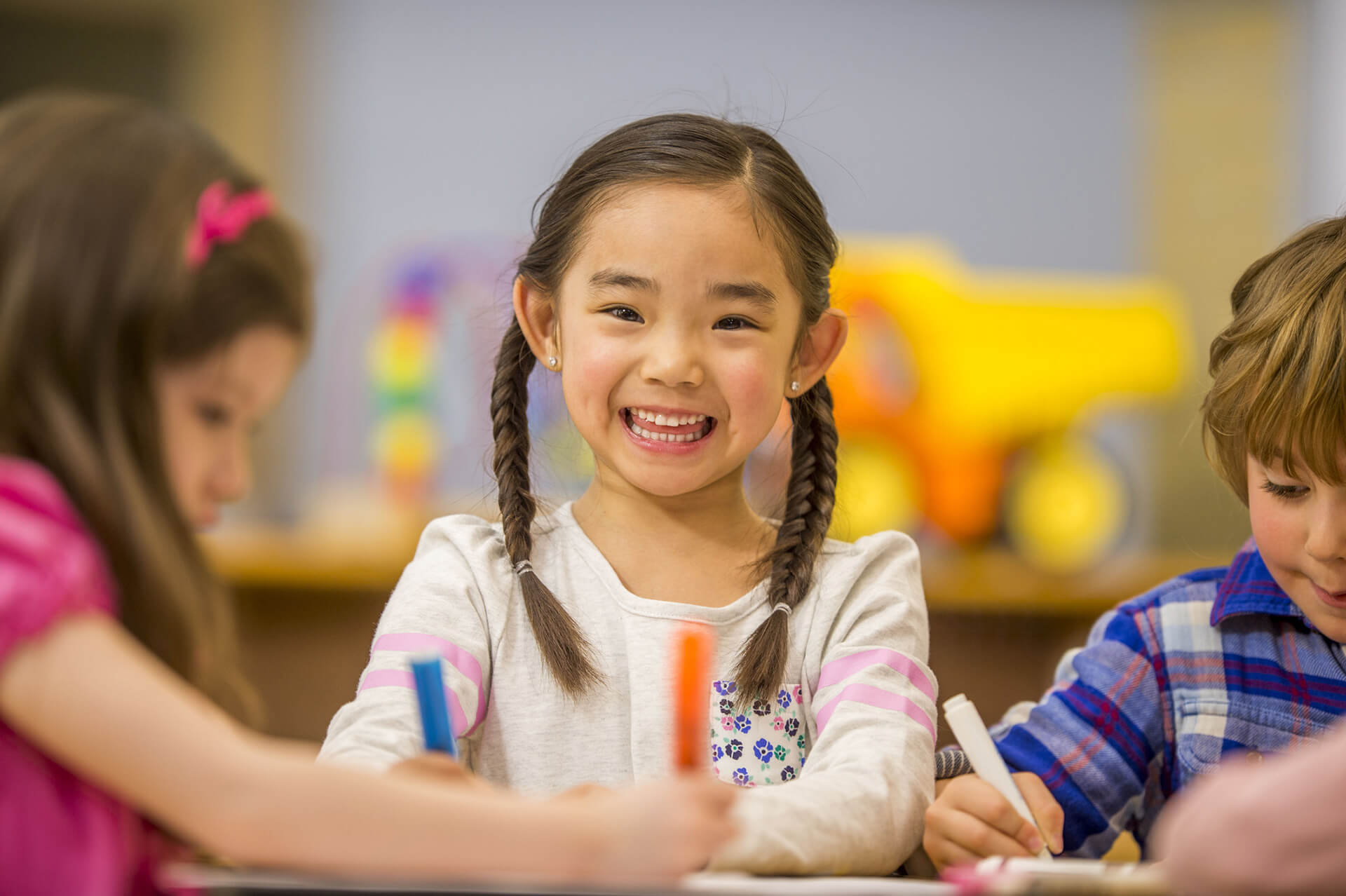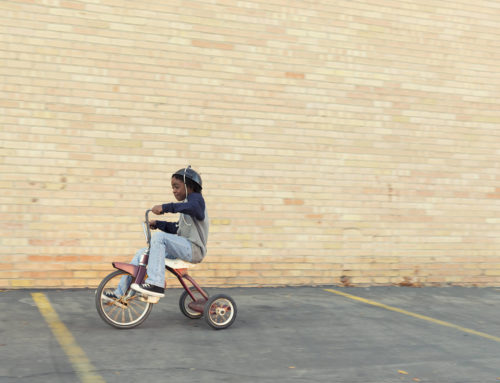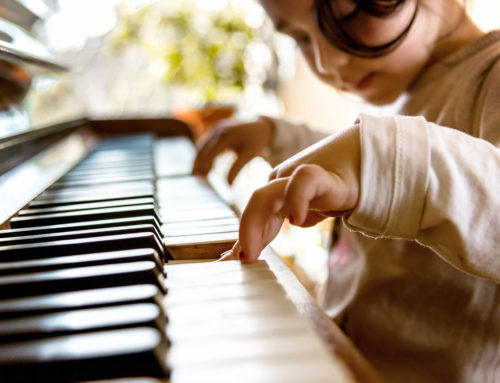By Laura Lewis Brown
Published by PBS Kids
As you search for the best preschool for your child you’ll need to consider the school’s philosophy or approach. Learn about the most prevalent preschool philosophies to help you choose a school that meets your child’s needs.
Montessori
Philosophy
This approach, developed by Maria Montessori in Rome in the early 1900s, is child-centered, with teachers serving as guides. In the Montessori school, play is a child’s work, says Wana. While there is a focus on academics, the distinguishing feature is that children learn at their own pace. There are special Montessori toys called manipulatives that are self-corrective; this means that a child knows if they assembled a puzzle correctly, for example, based on the toy fitting together, not because someone showed the child how to do it. “In Montessori programs it’s really the teacher’s job to help the kids find their way into the materials, a lot of which look like puzzles that engage the child at this level,” Pianta says. “Kids work at whatever level they are working at. You don’t organize the room according to a specific age.”
That focus on letting children learn at their own pace also affects how classrooms are arranged, with children ages three, four and five all being in the same room. This allows the older children to serve as role models for the younger ones, and also exposes children to different ages. Children generally have the same teacher for those three years, allowing close teacher-student relationships to develop. The mixed-age aspect also encourages older children to help the younger children, which helps build their self-esteem.
Who It’s For
Many parents choose Montessori because they believe it helps their children acquire leadership skills and independence in general. Jennifer Lucas, who chose Montessori for her daughters, ages five and three, likes the structure of the program and how children learn to work quietly and independently at a task. She also likes the mixed-age setup, although it took her oldest daughter time to adjust to being the oldest in the class. “She was always used to having her older friends and was one of the youngest. All of the sudden, most of her friends had moved on and she had not. It did not take long, and she has really grown this past year and has embraced being a leader and not a follower,” she says.
Learn more at: http://www.montessori.org/.
Waldorf
Philosophy
If you find a Waldorf school, you can trust that it is true to the Waldorf philosophy, since each school and all of its teachers must be Waldorf certified. This play-based approach is characterized by a predictable structure, providing children with a dependable routine, such as certain days of the week for set activities like baking or gardening, as well as mixed-age classrooms with the same teacher for multiple years. “There is an emphasis on creative learning, reading, singing, acting … It’s great for kids who want that predictability, but there is creativity there. It’s a blend,” says Karissa Sparks, vice president of marketing for GreatSchools. There is also an emphasis on cooperation, and the setting generally appears like a home—warm and friendly, with wooden toys and natural materials.
What stands out about Waldorf is its stance against traditional grading systems and exclusion of media in the curriculum. Waldorf does not include media (computers, videos or electronics of any kind) and also does not involve academics, which means no homework, tests, handouts or even desks. Children are introduced to formal reading skills in the first grade. The programs are “all-weather” and children spend a lot of time outdoors.
Who It’s For
Parents may choose Waldorf because they want to help develop their child’s individualism. “A Waldorf education teaches kids how to think, not what to think, and to develop themselves as well-rounded individuals with an innate curiosity and love of learning,” says Jamie Quirk, Communications and Outreach Director at Waldorf School of Princeton in New Jersey. “When they leave the Waldorf environment, they are equipped to rely on their own inner compasses to help steer them on their individual journeys, rather than fit into one specific niche.”
Learn more at: http://www.whywaldorfworks.org/.
Reggio Emilia
Philosophy
Although you may not come across many Reggio Emilia schools, there are many Reggio Emilia-inspired schools based on the approach developed in the 1940s in the town of Reggio Emilia in northern Italy. After World War II, the community, along with schoolteacher Loris Malaguzzi, came together to develop schools that would help children become better citizens. “The overall philosophy is that kids are really encouraged to explore. The teachers are there to help them explore,” Wana says.
Reggio Emilia schools are known for a project-based approach, which many preschool programs have borrowed. In a project-based curriculum, lessons are based on the interest of the students. As Wana explains, if children playing outside encounter a flower and start to ask the teacher questions about how it grows, instead of directly answering the questions, the teacher encourages the group to “find out together.” The class may then build a garden and learn all that entails, while acquiring other important premath, prereading concepts. Another example would be setting up a restaurant in the classroom based on the class’s interest in playing in the kitchen. As Wana explains, projects become “child-originated and teacher-framed.”
Reggio Emilia programs are also known for documenting what children do, taking photos, making videos, writing observations. Then children and teachers can review what they’ve done throughout the year.
Who It’s For
Parents who want their child to be a good citizen may choose a Reggio Emilia program. Children learn all about cooperation through the many projects, particularly how to solve problems and resolve conflicts.
Learn more at: http://www.reggioalliance.org/.
Other Preschool Programs
HighScope
This curriculum, which can be found in a lot of community-based programs, such as the local church or YMCA, revolves around a concept of active participatory learning, holding that “children learn best through hands-on experiences with people, materials, events, and ideas.”
Learn more at http://www.highscope.org/.
Bank Street
Very similar to play-based learning, Bank Street was developed by the Bank Street College in New York City. Advocates hold a child-centered philosophy and believe that children are “active learners, explorers, experimenters and artists” and benefit from a diverse curriculum. The system stresses the importance of materials in the classroom and views the teacher as a “facilitator of learning.” This method aims to help children make sense of the world around them by studying multiple aspects of social studies.
Learn more at: http://bankstreet.edu/family-center/.
Creative Curriculum
Developed by for-profit Teaching Strategies Inc., this system provides teachers with textbooks and written materials that outline a child-centered approach. The company describes it as a “research-based system” that is being used in increasing numbers of preschool programs.
Although many of the philosophies and curricula overlap to some extent, it’s more common to see a formal curriculum when you visit local preschools, even if the program calls itself play-based. “Increasingly as parents, and to some degree school systems, start demanding a more educational kind of experience and more skill development out of their kids’ time in preschool, you see many, many more instances of a kind of more formal curriculum being infused into a preschool day,” Pianta says.
Learn more at: http://www.teachingstrategies.com/page/ccs_overview.cfm
Cooperative
Parents who want to be most involved and have a say in their child’s preschool education often choose to take part in a coop. A coop preschool may subscribe to one or more philosophies, but there is generally an emphasis on cooperation and resolving conflicts. Parents help run the school and help out in the classroom, working closely with the teachers. They are able to see their children in the learning environment and can develop partnerships with the teachers.
“The benefits of the coop is that your child sees you there,” says Sparks, whose child goes to a coop preschool. “Studies show that just the act of being there sends a very strong message that education is important. We know that it’s very important that a parent show up at school and the child see them.” Coops may be tricky for parents who work full-time or have other children in the home, but parents love being more involved in their child’s learning on a daily basis.
Learn more about other factors to consider when choosing a preschool.
Laura Lewis Brown caught the writing bug as soon as she could hold a pen. For several years, she wrote a national online column on relationships, and she now teaches writing as an adjunct professor. She lives in Baltimore with her husband and three young children, who give her a lot of material for her blog, EarlyMorningMom.com.








